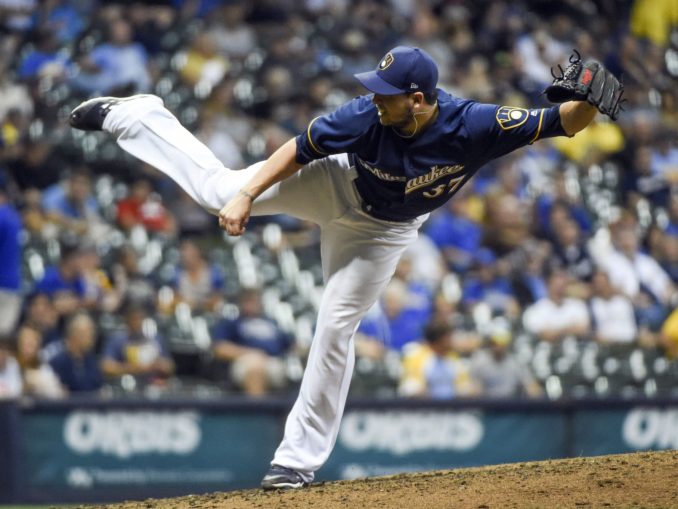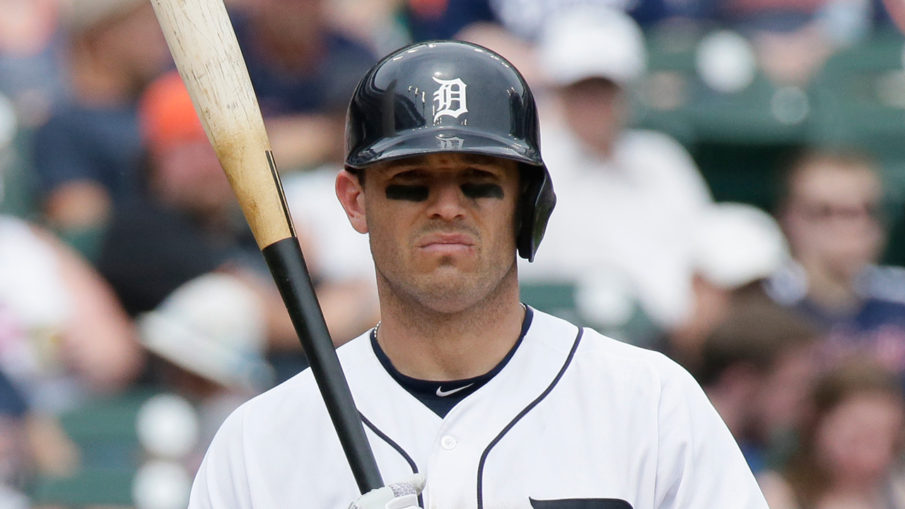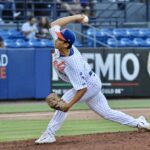
3 UP
1. Mets Sign Swarzak
Heading into the Winter Meetings, the Mets prioritized adding at least one reliever, and the Mets accomplished that goal by signing right-handed reliever Anthony Swarzak.
Swarzak is coming off a career best year partially fueled by an uptick in his velocity. Swarzak made 70 appearances in his time between the White Sox and Brewers. He was 6-4 with a 2.33 ERA, 1.03 WHIP, 2.6 BB/9, and a 10.6 K/9. Making these numbers all the more important is Swarzak predominantly appeared in the seventh and eighth innings.
Many talent evaluators believe the uptick in velocity and results are real. A large part of that is a competitive streak and Swarzak’s having found a comfort level in the bullpen.
With AJ Ramos and Jerry Blevins, the Mets are assembling a nice bridge to Jeurys Familia in the ninth.
2. Mets Don’t Lose Anyone In Rule 5 Draft
Despite many being down on the Mets farm system as a whole, the Mets did expose some players who very well could have been selected in the Rule 5 Draft. Fortunately, those players will remain a part of the Mets organization.
This includes knuckle baller Mickey Jannis, who had a 2.36 ERA after the All Star Break and a 2.33 ERA in the Arizona Fall League. As well as Adonis Uceta, who quickly rose through the Mets system after being converted to a reliever.
Depending on how the Mets address their roster this offseason and what happens in season, these two pitchers may very well be contributors to the Major League team during the 2018 season.
3. Players Still Available
While the Mets leave these Winter Meetings with just Swarzak in tow, the team still has plenty of options to fulfill its other needs. Players like Jason Kipnis and Josh Harrison are still available on the trade front. Jay Bruce headlines a group of 1B/OF options, and the Mets are showing interest in Todd Frazier who may believe can play first, third, or even second base next season. Additionally, while the Mets may not be looking to make further bullpen additions, old friend Addison Reed remains available.

1. Players Refusing Trades To The Mets
So far this offseason, we have seen two players with no trade clauses get moved – Giancarlo Stanton to the Yankees and Ian Kinsler to the Angels. While the Mets readily admitted they didn’t “feign interest” in Stanton, the team was very much interested in Kinsler, who was a good defensive player who had a reasonable $11 million salary for the 2018 season.
While the Mets engaged in trade discussions for the second baseman, Kinsler informed the Tigers he was not going to waive his no trade clause to go to the Mets. However, he was willing to go to the Angels, who was one of the 10 teams on his no-trade list. The reason for Kinsler’s decision was predominantly the fact he wants to play for a contender next year, and he does not see the Mets as a contender.
This is not too different than Stanton’s position when he did not include the Mets as one of the four teams he was willing to accept a trade. This does cause concern about what other players the Mets may miss out on because they do not see the Mets competing next year.
2. Mets Still Considering Reyes
The Mets adding Jose Reyes in 2016 with no real answer at third base was justifiable. With his playing relatively well in 2016, you understood the team bringing him back in 2017 as an insurance policy for David Wright. However, Reyes is coming off a season where he posted a -0.6 WAR, the infielder should not be considered as anything more than a possible utility player.
Rather, the Mets are still considering Reyes as the most likely fallback option in the event the team cannot address second base in a trade. This is extremely troublesome when you consider Howie Kendrick and Neil Walker, better players coming off better seasons, are still eminently available.
3. Mets Draft Then Trade Smith
Sometimes you get lucky, and the exact player your organization needs falls into your lap. That was the case in the Rule 5 Draft when Burch Smith, the top player available in the Rule 5 Draft according to Baseball America, lasted until the sixth pick.
Smith is a good fit for the Mets because he gave the Mets a Major League ready cost controlled pitcher that could either start or go to the bullpen next year. He has two swing and miss pitches with a fastball that sits in the mid 90s. Overall, Smith could’ve been part of the starting rotation or bullpen mix for a team that needs arms for both roles.
Instead of keeping Smith, the team opted to trade him to the Kansas City Royals for cash considerations or a player to be named later. Most likely, neither the cash nor the player would be as useful to the Mets as Smith would have been during the 2018 season and beyond.













